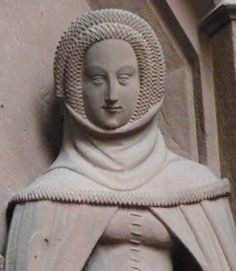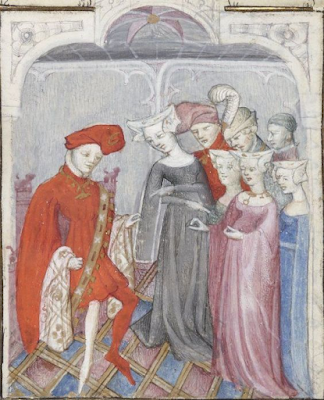There is so much background research that went into this, it's hard to know where to begin.
Best to probably begin with where I started. The Amazigh culture of the Maghreb is ancient, but it’s history is mostly oral. What is written is recent, and mostly myths and legends. Much of the history has been lost due to modern Arab influences and French colonization. But with the re-emergence of their culture much more is being recorded in their own perspective.
I started looking at emerging research, talking with people about their traditions, and compared that with the earliest writings of the French in the late 18th century. While it is clear that there has been a lot of influence after that, those early notes and photographs are anthropological valuable.
The earliest photographs show many layered garment that are attached with large fibulas, reminiscent of ancient Roman garments. Along with a large quantity of jewelry.
But these images are not mediaeval, and can be very problematic due to the nature of French colonization that followed. So, I had to find records written earlier than this. What I did find are small things that add up to a bigger story.
The Romans had much to say of the region, the Maghreb was considered the bread basket of empire. Many people from the region become important figures, saints and even emperors. They wrote about the pottery, the woven textiles, and the jewlery.
Some of the descriptions of textiles, pottery and even the fibulas matched the photographs and writings of the French in the 19th century!
How did a culture well established in Roman era, survive waves of Arabic invasions and dominant culture?
The early Arabic Muslims were tolerant and tended to rule in the cities, and left the mountain villages and nomadic tribes to their own devices as long as they paid taxes. Many city dwellers adopted the Arabic culture, while the tribes retained their freedom.
The first contact the Amazigh of Eastern Algérie had with the Muslim Arabs, was the Fatimids. The Fatimids hired the Katama berbers to be their supporting army, and they were pivotal in the Fatimid expansion into Egypt and the founding of Cairo. However eventually the Berbers fell out of favor and many returned back to their ancestral home. When the returned, they brought with them a new art form learned in Egypt. Enamel!
The Katama created a distinctive technique. Green, blue, and yellow enamel embedded between fine silver and dotted with coral.
My version of the jewelry is put together with several craft store findings and used an enamel paint to mimic the style of the antique bijoux.
Ibn Khaldun was a prominent medieval writer in the 14th century Arabic world, he had berber origins, and wrote down many histories, including that of the berbers.
Bougie (now Bejaia) was a prosperous city that was a melting pot of culture and knowledge, under berber control. Many Moorish berbers settled in the area, as the Reconquista forced them out of Spain. Scholars wrote how the woman would wear the tight fitting Spanish style of gown underneath their outer garments.
Given these notes, and that cotton and bright colored are both extremely common in this area, I chose a fitted gown that was a bright blue cotton.
Because Roman descriptions, Ibn Khaldun writings, the notes of the Ottomans and the early French postcards all depicted a similar style of outer garments, I felt comfortable using the postcards as inspiration for this recreation. I choose a bright pink herringbone wool as the Shawls. They are folded and held at the shoulders with the fibulas and belted around the waist.
I don't have the hair necessary to recreate the braided hair (shown in some photos, but also very popular in 14th century Spain) so I choose to wrap a couple scarves as a headdress and added a gold silk veil.
Tattoos were a very symbolic part of Amazigh culture. And the ones that I drew on had deeply personal meanings. But that's not for this post.
I do want to update this outfit, find a Shawl or two with more accurate patterns. Add a few more jewelry elements, and probably bright trim. And maybe the hood I've seen depicted many times.


.jpg)


.jpg)
























.jpeg)
.jpeg)












.jpg)



















